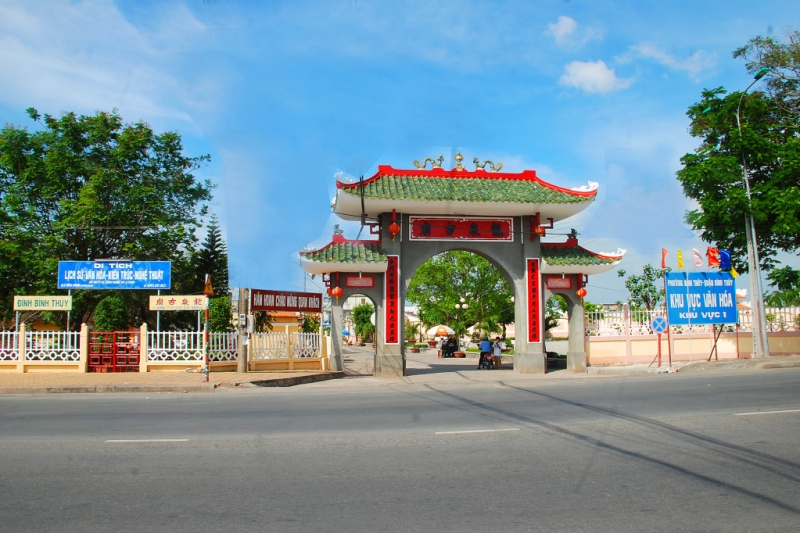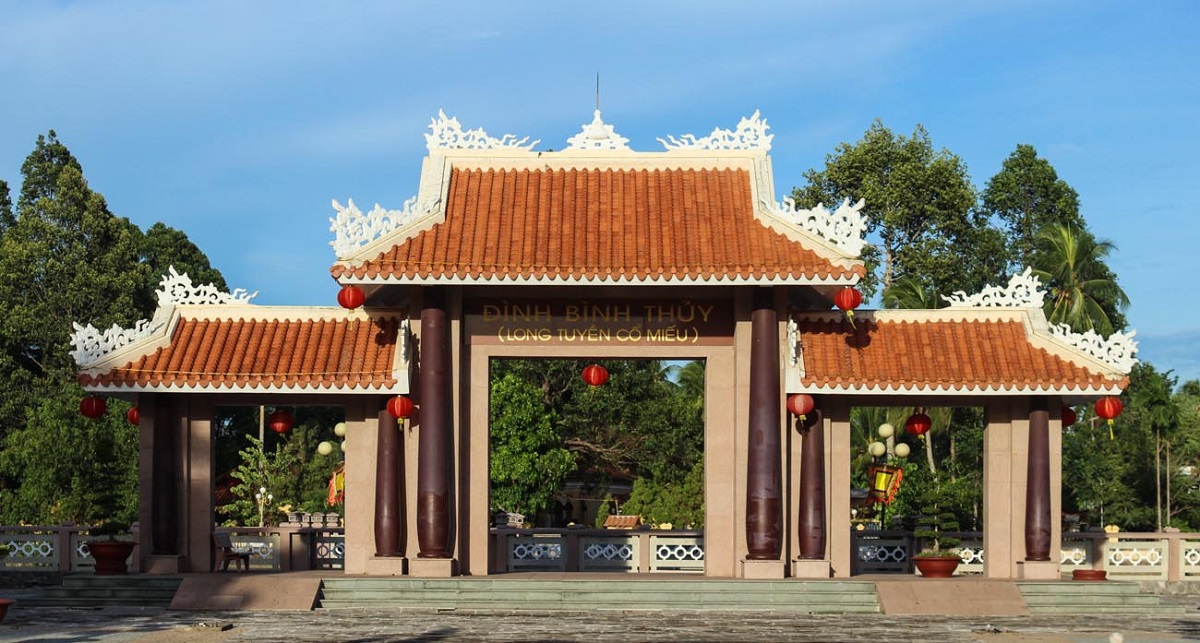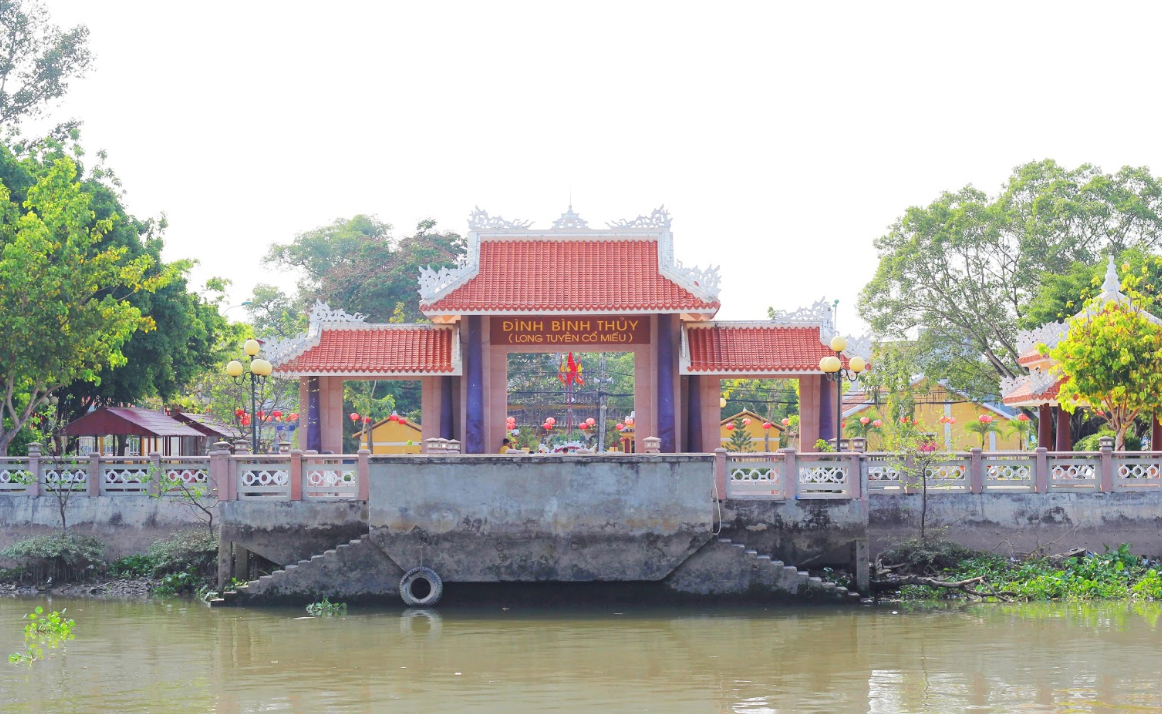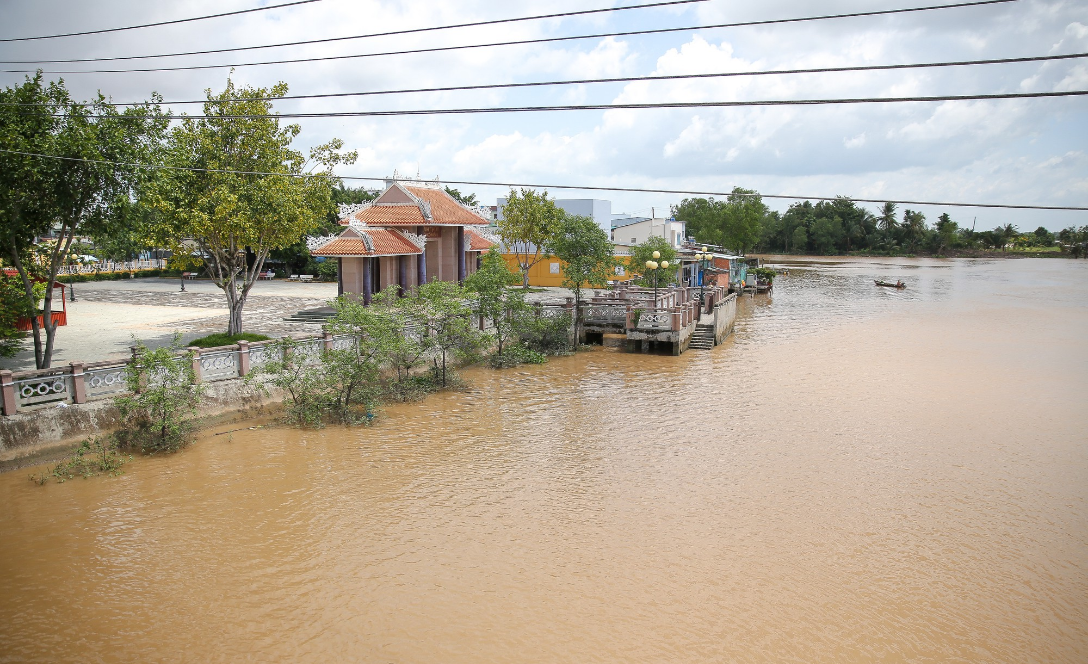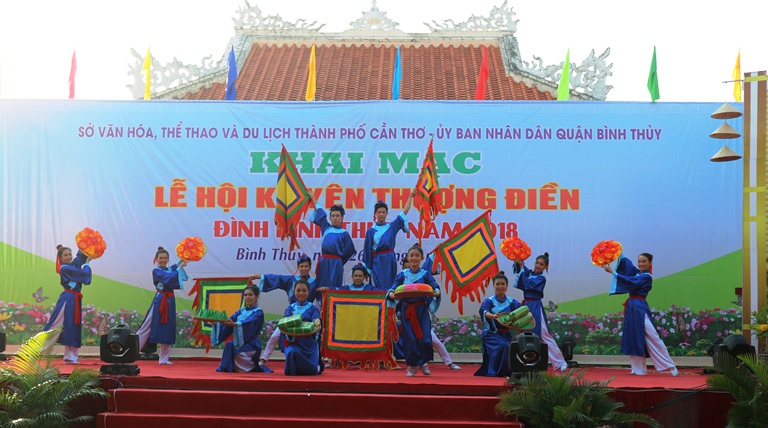The communal house or communal house is the place to worship God Thanh Hoang, the god of the village. Among all the ancient communal houses that still exist in the Southwest region, it can be said that Dinh Binh Thuy in Can Tho is an architectural work with the most eye-catching, most majestic and most splendid artistic style. Traveling to Can Tho to visit Binh Thuy temple, you not only admire the ancient art and architecture, but also have the opportunity to learn about the historical formation of this sacred temple.
The gate of Binh Thuy communal house
Binh Thuy communal house or Long Tuyen Ancient Temple is the pride of the cultural and religious traditions of the land and people of Can Tho. This is a valuable work on the traditional art and architecture of the Vietnamese people during the reclamation period of the Southwest region in the 19th century. Over the period of historical ups and downs, Binh Thuy Dinh still retains many elements. Unique architectural art elements of an ancient village in the southwestern river region.
Valuable works on traditional art and architecture of the Vietnamese people during the reclamation period of the Southwest region
Binh Thuy communal house is located at Le Hong Phong street, Binh Thuy ward, Binh Thuy district, about 5 km from Can Tho city center. From the center of Can Tho City, you follow Nguyen Trai Street through Cach Mang Thang Tam and Le Hong Phong streets to reach Binh Thuy communal house.
Binh Thuy communal house is the pride of Can Tho’s cultural traditions and beliefs
Surrounding Binh Thuy Dinh is a quadrangle fence, including: the North side borders the Hau River; East side is Binh Thuy canal, also known as Long Tuyen canal; The south side is Le Hong Phong street connecting with other major roads such as Cach Mang Thang Tam street, Bui Huu Nghia street … and the west side is a residential area. With this location, it can be seen that Dinh Binh Thuy is a work that fully converges the feng shui elements “the most close to the river, the second close, the three near-sighted”.
Binh Thuy Communal House is a work that fully converges the feng shui elements “the most close to the river, the second the close, the three near the nearsighted”
Binh Thuy communal house was built in 1844 on a large plot of land with an area of more than 500,000m2 and in 1852 was consecrated by King Tu Duc. Outside, there are two large shrines worshiping the gods Nong and the Tiger, near the gate there are two shrines worshiping the God of the Forest and the God of Khai, the water channel.
Lying next to the peaceful and poetic river
In the communal house, there are 2 areas including the main communal house and the hexagonal hamlet. The main communal area consists of five houses (the vestibule, the main hall) and the “courtyard” includes a house for preparing rituals along with a theater that is arranged scientifically and neatly to create an airy space. . Previously, Binh Thuy communal house was not only a dignified place of worship, but also a place for dignitaries in the village to meet to discuss national affairs and gather people to fight foreign invaders.
The main hall of Dinh Binh Thuy
The main architecture of the communal house has many features of the Southwest region that the communal houses in the North do not have such as the vestibule and the main hall in a square shape with a length of 6 rows of columns, each row of columns having 6 columns. The pillars are spread out to make the house more solid. The typical motifs carved on the columns are dragons, peonies, etc. with carved, elaborate and sophisticated lines, creating a majestic and ancient look for the communal house.
The majestic and ancient beauty of the temple
The main hall has three overlapping roofs in the architectural style of “upper floor, lower porch”. On the roof of each zone, a pair of winding dragons are designed to compete for fruits or simply decorative patterns on the outside but with strong impressions.
The pair of winding dragons compete for the pearl
The architecture of the communal house not only shows the quintessence of the river and garden culture of the Mekong Delta but also bears the imprint of the traditional ancient village of Can Tho.
The architecture of the communal house is typical of the Southwest region
The arrangement of altars in the communal house with a rather diverse and rich way of worshiping gods has reflected the culture, and also partly introduced the liberality, openness, tolerance to receive all the quintessence according to space and space. time.
In addition to worshiping gods, village deities, ancestors who have merit to open the land, … Dinh Binh Thuy also set up altars for heroes who have contributed to the country such as Nguyen Trai, Nguyen Hue, Nguyen Trung Truc, Vo Huy Tap, Dinh Cong Tru, Phan Boi Chau, Phan Chu Trinh, … Especially after the liberation of the country on April 30, 1975, Binh Thuy communal house set up an altar to worship and commemorate President Ho Chi Minh.
Temple of Dinh Binh Thuy
Annually, Binh Thuy Communion takes place two big festivals, namely Ky Yen Thuong Dien Festival which lasts for 3 days from the 12th to the 14th of the fourth lunar month, with boat procession, Boi singing… and the Summer Festival, which takes place on the 14th and 15th of the month. Slow down, prepare to welcome the new year. This is a cultural festival that attracts people from all over the world to participate, imbued with the characteristics of wet rice civilization, praying for national peace, good weather, good weather and good family.
Ky Yen Festival Thuong Dien Dinh Binh Thuy
During the days of Thuong Dien and Ha Dien festivals in Binh Thuy communal house, visitors from far away attending the village communal house festival will be able to see folk performing arts. Join games, explore culture and enjoy many delicious dishes of Can Tho city.
Binh Thuy communal house is one of the few communal houses certified as a national historical and cultural relic in 1989. Not only is it a place of worship and festivals, it is also a place to preserve cultural identities. ethnic group, representing a cultural feature of the southern river region, has special significance in the spiritual life of Binh Thuy people.
Therefore, when you have chosen to travel to the West, to visit the alluvial river region, you should come to Can Tho, enjoy the peaceful beauty of Binh Thuy Dinh, join the traditional Binh Thuy family, to have the best experiences. wonderful with the rustic people who are sincere and hospitable. After arriving at Binh Thuy Communal House, you can combine sightseeing with other famous landmarks of Binh Thuy District such as: Binh Thuy Ancient House, Long Quang Pagoda, Hoi Linh Pagoda, Nam Nha Pagoda, Bui Huu’s Graveyard, Khu. The Plum Garden Relic…
Source: Collected internet.
